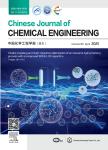版权所有:内蒙古大学图书馆 技术提供:维普资讯• 智图
内蒙古自治区呼和浩特市赛罕区大学西街235号 邮编: 010021

作者机构:SINOPEC Research Institute of Safety Engineering Co.Ltd.Qingdao 266071China State Key Laboratory of Chemical EngineeringSchool of Chemical Engineering and TechnologyTianjin UniversityTianjin 300072China
出 版 物:《Chinese Journal of Chemical Engineering》 (中国化学工程学报(英文版))
年 卷 期:2025年第78卷第2期
页 面:44-57页
核心收录:
学科分类:080704[工学-流体机械及工程] 080103[工学-流体力学] 08[工学] 0807[工学-动力工程及工程热物理] 0801[工学-力学(可授工学、理学学位)]
主 题:Bubble Microfluidics Microchannel Breakup Viscous fluid
摘 要:Bubble breakup at T-junction microchannels is the basis for the numbering-up of gas−liquid two-phase flow in parallelized microchannels. This article presents the bubble breakup in viscous liquids at a microfluidic T-junction. Nitrogen is used as the gas phase, and glycerol-water mixtures with different mass concentration of glycerol as the liquid phase. The evolution of the gas−liquid interface during bubble breakup at the microfluidic T-junction is explored. The thinning of the bubble neck includes the squeezing stage and the rapid pinch-off stage. In the squeezing stage, the power law relation is found between the minimum width of the bubble neck and the time, and the values of exponents α1 and α2 are influenced by the viscous force. The values of pre-factors m_(1) and m_(2) are negatively correlated with the capillary number. In the rapid pinch-off stage, the thinning of the bubble neck is predominated by the surface tension, and the minimum width of the bubble neck can be scaled with the remaining time as power-law. The propagation of the bubble tip can be characterized by the power law between the movement distance and the time, with decreasing exponent as increased liquid viscosity.